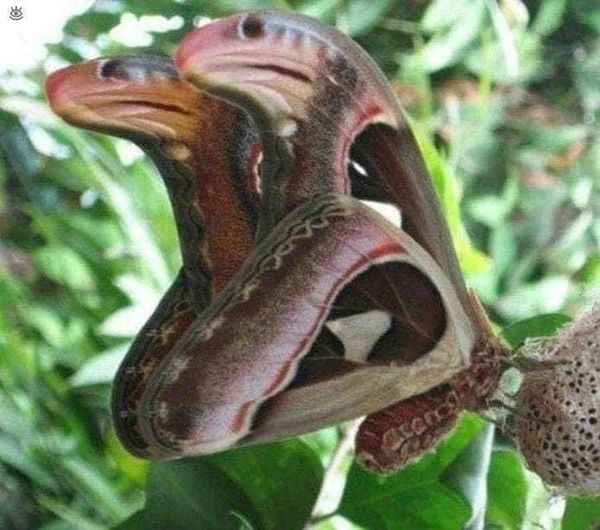The Earth is a wondrous place filled with unique and incredible animals. It is fascinating to observe how these creatures interact with their environment to survive and maintain balance in their ecosystems. Recently, I came across some images of three “angry snakes” hiding in a tree, and I must admit, I was intrigued. But, as it turns out, these pictures are not what they seem.
Biodiversity is the term used to describe the incredible diversity of species found in nature. Each species plays a specific role in its habitat, contributing to the balance of the ecosystem. Over time, animals and plants have developed amazing adaptations and survival strategies. Some insects have evolved camouflage colors, while others have created toxic compounds for self-defense.
In 2021, a photo shared on Twitter by Rob Allam caused quite a stir. The image appeared to show three angry-looking “serpents” hiding in a tree. However, upon closer inspection, it became clear that these “snakes” were actually a clever optical illusion created by the wings of two different species of the Atlas moth.
The Atlas moth is a fascinating species found in Asian forests. It is one of the largest species of Lepidoptera, with a wingspan that can reach up to 24 cm (9.4 in) and a wing surface area of over 160 cm2 (25 in2). The body of the Atlas moth is much smaller than its wings, creating a distinct size difference. This impressive insect was first discovered by Carl Linnaeus in 1758 and gets its name from the Greek mythological Titan Atlas.
During its adult stage, the Atlas moth lives for only about two weeks. Its primary goal during this short lifespan is to lay eggs and protect them until they hatch. To disguise itself from predators, the Atlas moth mimics the appearance of a snake.
When the viral image of the “snakes” surfaced on social media, many users initially had trouble believing that they were actually moths. The disguise of the Atlas moth is so convincing that it can be mistaken for a real snake. People marveled at its ability to blend in with its surroundings and protect itself from harm.
Contrary to popular belief, Atlas moths are not strong flyers. They prefer to rest during the day and become active at night to conserve energy. When the moth senses danger, it falls to the ground, writhes, and flaps its wings to resemble the head of a snake.
The presence of the Atlas moth is typically found in the tropical jungles of Asia, but sightings have also been reported in Europe and the United States. In 2012, a massive Atlas moth was discovered on a windowsill in Ramsbottom, Greater Manchester. The family who found it initially mistook it for a bat due to its size. Sadly, the moth passed away soon after being found.
In July 2022, another historic occurrence took place when an Atlas moth was photographed in Bellevue, Washington. This was the first known sighting of the species in the United States. Another moth was also discovered in Sweden in the same year.
The remarkable size and appearance of the Atlas moth never fail to astonish people. Its striking beauty prompts people to take out their phones and capture the moment. If I ever had the opportunity to encounter this magnificent creature, I would definitely be in awe. I would make sure to take a safe distance if its resemblance to a snake became more prominent.
Please consider sharing this article on Facebook to spread awareness about this extraordinary moth. It deserves recognition for its exceptional qualities and for venturing beyond its natural habitat!





